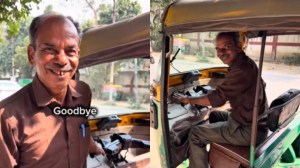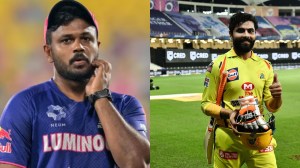Global Ayyappa Sangamam at Pamba: why this river basin’s religious and cultural significance extends beyond Sabarimala
As Pamba hosts the Global Ayyappa Conclave, it is worth noting that beyond the Sabarimala temple and its deity, Lord Ayyappan, the river basin represents a vibrant blend of legends, diverse faiths and rich traditions.
 Pamba is the third-longest river in Kerala, originating from the Pulachimalai hill in the Peerumedu plateau of the Western Ghats. (Wikimedia commons)
Pamba is the third-longest river in Kerala, originating from the Pulachimalai hill in the Peerumedu plateau of the Western Ghats. (Wikimedia commons)In 2018, centuries-old terracotta pieces, parts of male and female figures and Naga images, were unearthed in Aranmula across the Pamba River in Kerala’s Pathanamthitta district. The first-of-its-kind discovery from the banks of the Pampa triggered intrigue, but researchers are yet to establish if those findings represent a major, widespread civilisation or were the remains of a more localised, ancient tribe.
That said, even if it does not qualify as a civilisation, the river basin holds great significance in Kerala’s history as a region that nurtured a syncretic culture. As Pamba hosts the Global Ayyappa Sangamam on Saturday, a conclave of Sabarimala devotees from around the world organised by the Travancore Devaswom Board (TDB), it is worth examining why Sabarimala and its deity, Lord Ayyappan, represent just one aspect of the river basin’s rich religious and cultural heritage.
Pamba is the third-longest river in Kerala, originating from the Pulachimalai hill in the Peerumedu plateau of the Western Ghats. It flows through the districts of Idukki, Pathanamthitta, and Alappuzha before emptying into the Arabian Sea through various channels.
On the question of the earliest historical references to the Pamba, historian M G Sasibhooshan cites The Periplus of the Erythraean Sea, written by an unknown seafarer who navigated the western coast of India during the first century CE. This text mentions an inland port town called Nelcynda located on the banks of the Pamba River.
“Nelcynda was situated at Nakkada in present-day Niranam in Pathanamthitta district. Pepper, cardamom, and cinnamon were among the major commodities. They used to come to Nelcynda from Nilakkal, which was a collection centre,” says Sasibhooshan.
“Traders used to take these commodities from Nelcynda to Africa and from there to Venice by land, and from there to other parts of Europe. In the writings of Roman author Pliny, the river Pamba was mentioned as Baris,” he adds.
Now, there is hardly any trace of the port town where Nelcynda was supposed to be. But the slit deposited by Pamba and its tributaries has given Kerala the highly fertile land of Kuttanad, which is known as the ‘rice bowl of Kerala’. It is one of the few places in the world where farming is done up to two metres below sea level.
Bhakti movement flourishes
Pamba is now referred to as ‘Dakshina Ganga’ due to its connection with Sabarimala. However, its links to Hinduism date back long before Sabarimala rose to prominence.
Writer-poet Manoj Kuroor says the Bhakti movement of Shaivas and Vaishnavas in the period after the Sangam era (300 BCE–300 CE) found strong currency in the Pamba river basin.
 Rush at Sabarimala temple for darshan of Lord Ayyappan. (Wikimedia Commons)
Rush at Sabarimala temple for darshan of Lord Ayyappan. (Wikimedia Commons)
“Shaivism was promoted by 63 Nayanars who were believed to have composed hymns celebrating Lord Shiva. Two of them were from Kerala. Viralminda Nayanar and Cheraman Perumal Nayanar. Among them, Viralminda Nayanar was from Sengkunroor, in present-day Chengannur (in Alappuzha district),” says Kuroor, who set his fictional work The Day The Earth Bloomed in the Sangam era, which saw the rise of all three major dynasties in South India: the Cheras, the Cholas and the Pandyas.
In Vaishnavism, 12 ancient Tamil poet-saints – known as Alvars – popularised the Bhakti movement through their verses that praise Lord Vishnu. One of them was from Kerala, Sthanu Ravi Kulasekhara (9th century CE), who was the earliest known Chera ruler of medieval Kerala.
The ripples of Vaishnavism reached the Pamba basin, too, as evidenced by the presence of five of the 108 Vaishnava Divya Desams in the region: Thiruvalvaazh (Sreevallabha Temple, Thiruvalla), Thiruvaaran Vilai (Parthasarathy Temple, Aranmula), Thirucchenkundroor (Thrichittatu Mahavishnu Temple, Chengannur), Thirukkadithaanam (Thrikodithanam Mahavishnu Temple, Changanassery), Thiruvanvandoor (Mahavishnu Temple in the Alappuzha district).
Kuroor points to one of the earliest inscriptions from the region, the Vazhappilly copper plates from the 9th century CE, to highlight the Shaiva traditions prevalent in those times. “The Vazhappilly inscription begins with the prayer ‘Namah Shivay’, rather than the usual ‘Swasti Sri’.”
The copper plates documented a resolution made by the local temple committee of the Vazhappally Maha Siva Temple near Changanassery regarding a land grant for daily worship.
Sabarimala’s legends and how it bridged beliefs
Today, Pamba is primarily known as the river ghat that serves as the base camp at the foothills of Sabarimala. While the hill shrine, according to eminent historians such as M G S Narayanan, assumed importance only after an incident of arson in 1950, the lore of Lord Ayyappan was popular.
As per Hindu mythology, Lord Ayyappan was born from the union of Lord Shiva and Lord Vishnu in his Mohini form to vanquish a demoness, Mahishi.
Kuroor presents an intriguing perspective on the effects of seeing Ayyappan as a fusion of Lord Shiva and Lord Vishnu. “The Kerala region never had an acrimonious relationship between Shaivism and Vaishnavism like it did in Tamil Nadu. A possible reason for less friction between the two groups in Kerala could be the belief in Lord Ayyappan.”
The legend of the presiding deity at Sabarimala is linked to the Pandalam royal family, descendants of the Pandya dynasty. Ayyappan was believed to be the foster son of the king Raja Rajasekhara. When the queen conceived later, she sent Ayyappan, also named Manikandan, to the forest to collect a tigress’s milk. Ayyappan found Mahishi there and fulfils the prophecy before returning to the kingdom riding a tigress.
According to mythology, Manikandan expressed his desire to renounce the kingdom and all material wealth to become an ascetic. The king then built a shrine for him, atop a hill that eventually became Sabarimala.
There is a school of thought that Ayyappan belongs to the Vellala clan, while another argues that Brahmins took over the temple from the Malayarayan tribe over a century ago. Another theory proposes that the Sabarimala temple was originally a Buddhist temple. The name Sastha, used for Ayyappa, was a title associated with the Buddha.
Confluence of religious traditions
While the Sabarimala temple restricts the entry of women of procreating age between 10 and 50, it is open to people of all religions. In fact, according to Hindu mythology, Ayyappan confronted a Muslim robber, Vavar, in a jungle and defeated him. Vavar was believed to have become a loyal companion of the prince. There is a mosque dedicated to Vavar in Erumely on the way to the hill temple, and a shrine for him near the main temple complex.
The banks of Pamba are also remarkable as they host two major annual events of Hinduism and Christianity: the Cherukolpuzha Hindu Matha Convention and the Maramon Convention, which is considered Asia’s largest annual Christian religious gathering.
According to Christian legends, St Thomas, one of the 12 disciples of Jesus Christ, reached the shores of Kerala in CE 52. He was believed to have built several churches in Kerala, including the St Mary’s Orthodox Syrian Church in Niranam on the Pamba basin.
Then, there is Karumadi Kuttan, a pilgrimage centre in Karumadi near Ambalappuzha. It is home to a three-foot-tall, now-mutilated black granite statue of Lord Buddha, attesting to Kerala’s Buddhist heritage.
Art and culture of Pamba
The Pamba river basin has given rise to various folk art forms, including nadanpattu (folk songs), vanchipattu (boat songs), and folk theatre forms such as kakkarissi natakam and velakali. Temple arts such as kathakali and koodiyattam have also found a fertile ground in the region.
“The Mathoor Kalari in Nedumudi was an important training institution for the southern school of kathakali. Then, we have the Ambalappuzha Sree Krishna Temple, which is famous for koodiyattam,” says Kuroor.
The Ambalappuzha Sree Krishna Temple is also known as the place where Kunchan Nambiar performed ottan thullal for the first time. Legend has it that Nambiar created the solo recite-and-dance art form, known to incorporate elements of wit and satire, to avenge the ridicule he faced from a performer of chakyar koothu – a storytelling art form – who scolded him for dozing off while accompanying the koothu performance on mizhavu (a pot-shaped percussion instrument).
 Padayani is a ritual turned art form. (Credit: Wikimedia Commons/Akhilan)
Padayani is a ritual turned art form. (Credit: Wikimedia Commons/Akhilan)
Kuroor also notes the contributions of the nagaswaram maestros known as Ambalapuzha brothers: Sankaranarayana Panicker, Gopalakrishna Panicker and Ramakrishna Panicker. The nagaswaram is a South Indian double-reed wind instrument used in temple ceremonies, weddings, and festivals.
The Pamba banks saw the origin of Padayani too, an ancient ritual theatre art form performed in Bhadrakali temples. “Padayani is a merger of the Yakshi cult and the Bhadrakali cult. The flight between Kali and Darikan is the major theme, and there are other characters, too. It is a ritual turned art form,” says Sasibhooshan, who also highlights the unique tradition of palliyodams, the sacred snake boats used in the Aranmula Uthrattathi festival on the Pamba River.







